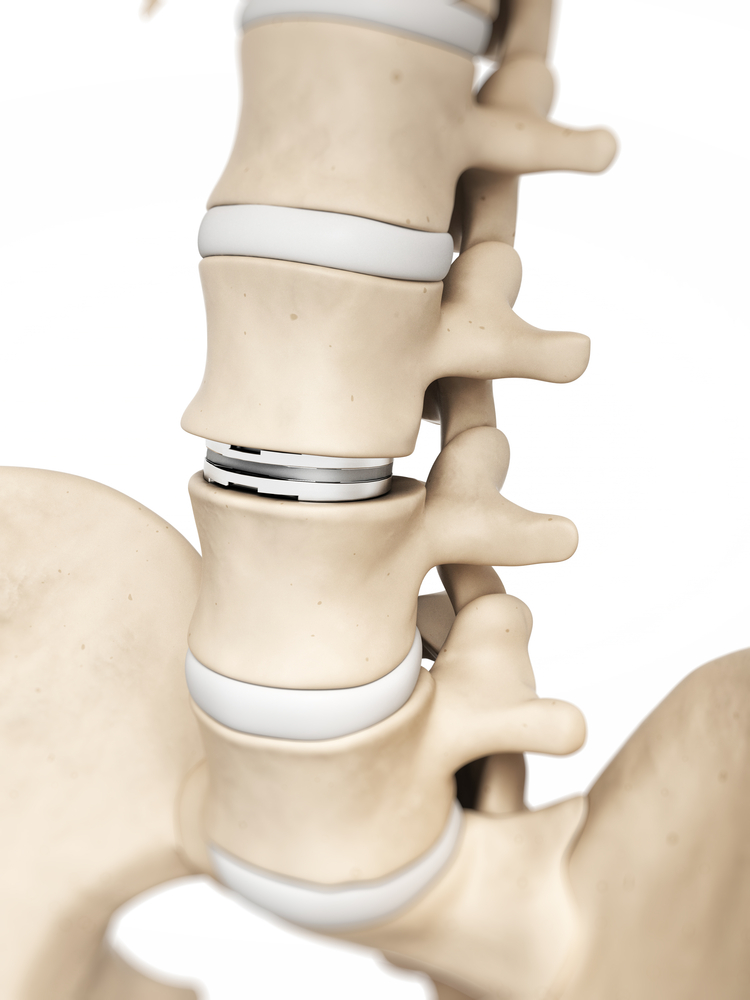Breaking new ground in medical technology can be both exhilarating and sobering. On a professional level, it is immensely rewarding to help pioneer new ways of helping patients overcome diseases or injuries which are often debilitating. However, when newer procedures and materials are used, there is very little medical history to support it. Scientific innovation in spinal surgery is not for the faint of heart!
The well-trained and highly specialized surgeons who performed the first artificial disc replacement procedures 15 years ago at Texas Back Institute embraced the opportunity to be the first practice in the United States to perform these procedures. The three surgeons responsible for the first artificial disc replacements were (seen below, left to right): Dr. Jack Zigler, Dr. Richard Guyer and Dr. Scott Blumenthal.
Since hindsight is indeed 20/20, these three specialists were asked to look back and share their thoughts about their impressions regarding the first artificial disc replacements. The story is replete with remarkable patient successes and a few disappointments. However, first a little history is in order.
A Brief Historical Perspective
As Dr. Zigler notes, disc replacement was available in Europe since the mid 1980’s, but it had not been studied in any scientifically rigorous manner until the Food and Drug Administration (FDA) studies for the Charite and ProDisc lumbar disc replacements began in the United States. In the early1990s, Dr Guyer and his associates heard about the artificial disc being used in Europe and sent a research team to study the results. Less than 10 years later Dr Scott Blumenthal did the first Charite disc replacement in the U.S. as he and Dr Guyer participated in that first FDA study.
“Very quickly, Texas Back Institute became the only site that studied both of these discs at the same time,” Dr. Zigler said. “It was the site where the first and third Charite in the U.S. were implanted by Dr. Scott Blumenthal and Dr. Richard Guyer respectively, in March 2000, and where the first ProDisc-L was implanted by me in October 2001.”
The seminal papers in the scientific literature reporting the multicenter experience in the United States were authored by Dr. Blumenthal for the 2 year results of the Charite, by Dr. Guyer for the 5-year results of Charite and by Dr. Zigler for both the 2 and 5 year results of the ProDisc.
“We at TBI were instrumental in providing the key clinical information that led to the FDA’s approval of these devices, which have subsequently helped thousands of patients,” Dr. Zigler said.
Even 15 years later, these three physicians are excited about the work they did to help patients benefit from this remarkable medical advance. Dr. Guyer summed up why these spine specialists are rightfully proud of their efforts.
“The ability to give patients back their quality of life is what I’m most proud of, “he said. “Seeing the smiles on their faces, sometimes mixed with tears of joy, when they express their gratitude for the disc replacement that has given them their life back.”
The Outstanding Results of This Procedure
The FDA is rigorous in its evaluation of new procedures like artificial disc replacement, and the spine specialists at Texas Back Institute played, and continues to play, an important role is assessing its medical efficacy. Dr. Zigler pointed out that each device was tested on several hundred patients at 15-20 centers across the country. At each center, patients who had failed to improve after at least 6 months of nonoperative care were randomly assigned to receive either a fusion or an artificial disc replacement.
“In most studies, the patients were not told which operation they would get until they woke up after surgery,” Dr. Zigler said. “Patients were all initially followed for two years, and the differences in their outcomes were evaluated by the FDA, reported at scientific meetings worldwide, and ultimately published in peer-reviewed scientific literature.”
Following the initial approval, the FDA mandated an additional 3 years of post-market surveillance, requiring 5 year outcomes analysis. This the highest level of scrutiny ever given to a new technology.
Dr. Blumenthal noted, “The results show that ADR patients have a much quicker recovery, faster return to work and earlier return to normal activities.”
Dr. Guyer added, “Though the short term results may be similar to fusion, the real difference comes with long term follow up of greater than 5 years. The fusion patients are up to 3 times more likely to have surgery at the next level compared to the disc replacement patients.”
“I have had the opportunity to analyze and publish on this longer term comparative national data,” Dr. Zigler said. “However I have also seen this on the most personal and individual level, almost every day in my own clinic. I see my patients who have been lucky enough to be covered (by their insurance) for artificial discs and those who were denied by their insurance carrier and had to have fusion surgeries.”
“In general, the artificial disc patients recover more quickly and do better earlier. Long term, the patients with artificial discs show less degeneration at their adjacent levels on x-ray, and require less additional surgery. Disc replacement surgery, most patients tell me, was a life-changing event for them.”
What about the future of artificial disc replacement?
“We are very excited about the next generation of device,” said Dr. Blumenthal. “We hope these will be available soon.”
The effect on the quality of life for patients who have been “lucky” enough to get this procedure begs an obvious question. Why isn’t everyone who could benefit from this life-changing operation getting it? The answer to this is the greatest disappointment for the three surgeons who pioneered the procedure.
“We are very excited about the soon-to-be-released Activ-L lumbar disc replacement from Aesculap spine, Noted Dr. Blumenthal. “It is truly a next generation disc combining the best features of the Charite and Prodisc. Since we participated in the FDA trial the CDR at TBI will be the first to offer it in our market later this year.”
Despite the weight of scientific analysis and impressive level of patient satisfaction, most health insurance companies are not ready to approve payment for the artificial disc. More on this in the next post.
If you are experiencing back pain, some of the leading spine specialists in the United States are available to see you. Just click here to set an appointment.

